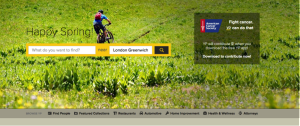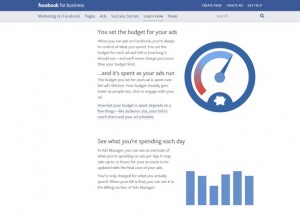Email sign-offs may seem like a minor detail, but they are not! These last few words in your email can have a significant impact on how your recipient perceives your message.
By taking adequate time crafting your email sign-off before you hit send, you can leave a more profound impression on your recipient, which can make your email more effective at getting your message across or reaching your goals.
In this article, I’ll introduce you to email sign-offs along with some examples you can use as your own!
So let’s go ahead and dive in!
Table of Contents
Why your email sign-offs matter
Your email sign-off plays a vital role in how someone receives your email.
Of course, the meat of your email message is crucial! The problem lies in the fact that most people pay very close attention to the body of their message and completely ignore their sign-off altogether, choosing to simply opt-in for the standard:
- “Best”
- “Thanks”
- “Cheers”
Here’s why this usually isn’t the best route to go — it leaves your recipient with no touch of personalization and it doesn’t drive any action on their part. Your email sign-off should work as a cleverly crafted call-to-action that maps to your goals.
Think of it like this: The body of your email should be the inspirational content that gets the reader excited about whatever it is you are proposing. It’s then your email sign-off that is going to get them to make the final conversion – whether that is visiting a recent blog post so you can show the reader more about you and your business, or directing them to download a resource that they could use.
Whatever it may be, your closing is the last thing your recipient reads in your email before making a decision, so you definitely want to do your best to make it count!
3 quick tips for creating the perfect email sign-off
When you think of a standard email sign-off, they are usually brief statements followed by your contact information. Not that much to it, right?
But if you want your email sign-off to be genuinely effective, you’ll have to put a bit of elbow grease into the creation process. Don’t know where to begin? Here are three quick tips to help you create a compelling email sign-off:
1. Consider the context of the occasion
There’s no one-size-fits-all approach to signing off an email. What might work for one occasion may not work for another. This is why it’s extremely important to think about the type of relationship you have with your recipient (or readers) and the level of formality that’s appropriate for the situation. Doing so will help you better choose a fitting sign-off for your email.
2. Always include your name
The entire point of an email sign-off is to provide your reader with a way to connect with you. To create this connection with your reader, they need to know who the writer of the message is. That’s why you want to always include your name at the very end of your salutation.
Assuming your message is business-related, you also want to consider including your company name and job title in your salutation. That way, the reader knows who is reaching out and, in turn, may be more inclined to respond.
3. Don’t forget to add your contact information
The next line in your email sign-off should be additional methods for the reader to contact you. This may include a simple email address (if there is an additional address you wish for them to use aside from the sending address), a telephone number, and even social media connection buttons that take readers to your personal or business profiles.
Again, this plays a vital role in helping your reader reach out to you, if they prefer a different means of communication besides replying directly to your email.
Examples of excellent email sign-offs you can learn from
If you’ve never really given your email sign-off much thought before, then coming up with one for your next campaign may be challenging. Here are a few different approaches you may take, depending on the purpose of your email.
Action-oriented email sign-offs
Action-oriented email sign-offs are ideal for when you want readers to respond to you.
- I’d love to hear your feedback on [proposal]
- Do not hesitate to contact me if you have any questions about [proposal]
- Let me know if you need anything
- I look forward to hearing back from you
For marketing emails, this sort of email sign-off may seem similar to a call-to-action. However, an action-oriented email sign-off is a way of asking your recipients to reply with their interest in whatever you are proposing.
Appreciative email sign-offs
Appreciative email sign-offs are less action-oriented, but are crucial when you first contact a potential partner or introduce your brand to someone in a welcome email. After all, they’ve taken the time to read your email, and you want to end this initial exchange on a positive note.
Simple ways to show your appreciation in your email sign-off can include:
- Thanks for being part of our community!
- Thanks for your time with [task]
- Many thanks again for your help with [task]
- Thank you for your consideration!
Encouraging email sign-offs
This type of sign-off is for those who are trying to encourage their recipients to do something, or build up the recipient’s confidence in themselves. They often have an inspirational tone that will help push people toward greater success with whatever they may be working on at the time.
A few examples include:
- Excited to see the amazing work you can do!
- Pushing forward together, let’s get this done.
- It’s always fantastic working with you!
Friendly email sign-offs
Friendly email sign-offs are some of the simplest ones to create. Typically, these are used when responding to customers, as part of an email newsletter, or corresponding with someone you’ve already established a good, respectful relationship with.
Some examples may include:
- Great working with you [name]!
- Until next time [name]!
- My best to you and yours
- Have a splendid (day/week/holiday)
Professional email sign-offs
Professional email sign-offs are used in a more formal setting, such as business emails or messages. These should be reserved for use with people you don’t know very well and who may not share the same sense of humor as you do.
Some examples may include:
- Sincerely, [name (or company name)]
- Respectfully, [name]
- All the best to you!
When creating a professional email sign-off, you want to remember the tips mentioned above, as well as these additional tips:
- Eliminate any funny anecdotes or jokes. If you use them, you risk losing the reader’s attention or coming off as the joke yourself.
- Do not use abbreviations, as this can come off as unprofessional and could land you directly in the spam folder.
Bonus: Email sign-offs you should avoid at all costs
In most cases, it’s okay to get a little creative with your email sign-offs. However, there are many examples of sign-offs you should avoid no matter whom you are talking to.
- TTYL (Talk to you later); TAFN (That’s all for now), Tnks (thanks), G2G (Got to Go): While abbreviations are fun in some instances, they often do not belong in professional correspondence – whether it be with a customer, client, or cold outreach. Not only are they unprofessional, but they also aren’t as universally understood as you may think.
- Yours Faithfully: While well-intentioned, this phrase comes off too personal, even for emails between you and your loyal following.
- XOXO or XX: Hugs and kisses have no place when it comes to proper business etiquette. Reserve these sign-offs for your best friend or loved ones.
- No salutation: You never want to end an email with just your name and contact information. This comes off as very cold and impersonal and could give off the impression that you really don’t care if the reader responds to your message.
- Peace Out, Catch you on the flip side, And that’s a wrap! : Slang should also be avoided in all business correspondences. Unless it’s with a close coworker, you want to make sure all business emails are professional, even at the most basic level.
The right email sign-off could make or break your next campaign
It’s no secret that first impressions are everything. Whether it comes to email marketing or cold email outreach, your closing statement and email sign-off play a vital role in how the individual on the other end of the conversation receives your message.
That’s why it’s time to give your emails the attention they deserve and make the most of your email sign-off. With a little bit of preparation, you can drive actionable results with your email sign-off.
Digital & Social Articles on Business 2 Community
(109)







